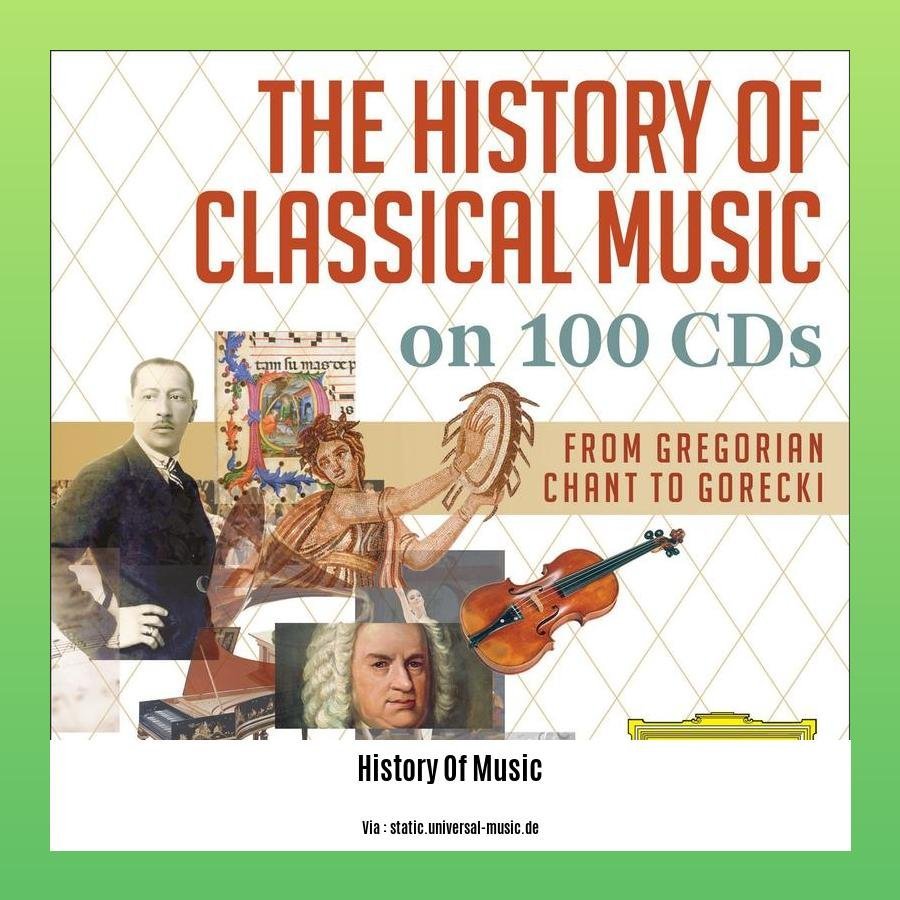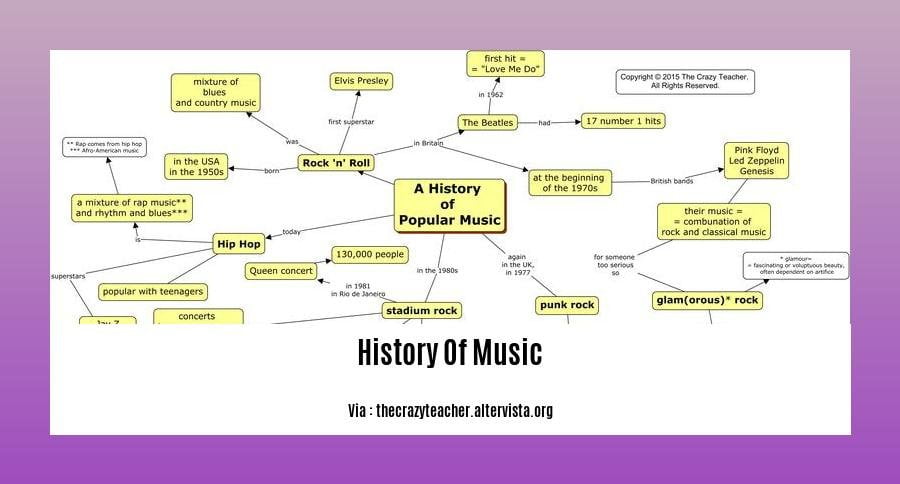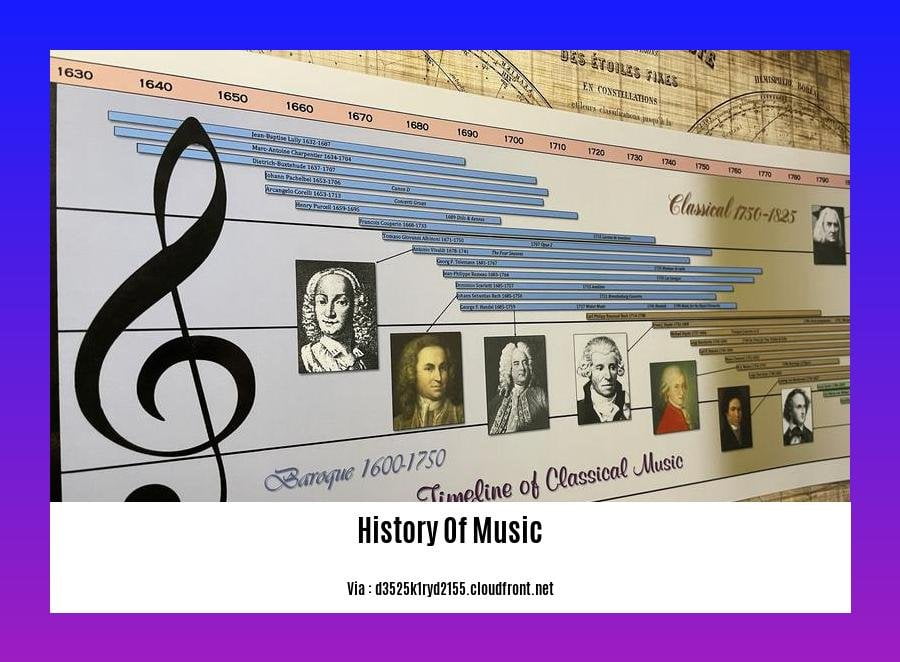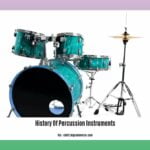Embark on a captivating journey through time as we delve into [The Enduring Legacy: A History of Music Across the Ages]. Join us as we trace the evolution of music from its humble origins to its vibrant present, exploring the diverse genres, instruments, and cultural influences that have shaped this iconic art form.
Key Takeaways: The Enduring Legacy: A History of Music Across the Ages
- Music is a universal cultural phenomenon found in all known societies.
- The origins and definitions of music are diverse, making it challenging to pinpoint a single source.
- Music and language have a complex relationship, with different perspectives on their origins.
- Music can be categorized into historical periods, including prehistory, antiquity, and modern eras.
- Technological advancements in the 20th and 21st centuries have significantly impacted music distribution, recording, and performance.
History of Music: A Journey Through Time


Music, a universal language, has accompanied humanity throughout history, leaving an enduring legacy that continues to shape cultures and connect people. From humble beginnings to contemporary manifestations, the history of music is a fascinating tapestry of innovation, expression, and cultural exchange.
Origins and Definitions
Defining the exact origins of music is a subject of ongoing debate. Some theories suggest it emerged as a precursor to language, while others propose it evolved alongside or from language. Regardless of its genesis, music has become an integral part of human existence.
Historical Periods
Music can be divided into various historical periods:
- Prehistory: Music’s earliest forms, from cave paintings to bone flutes.
- Antiquity: Rise of civilizations and the emergence of sophisticated musical traditions in Mesopotamia, Egypt, and Greece.
- Early Modern and Modern Periods: Development of polyphony, harmony, and new instruments, from the Renaissance to Romanticism.
- 20th and 21st Century: Technological advancements revolutionized music distribution, recording, and performance, giving rise to new genres and styles.
Cultural Universality and Impact
Music is a cultural universal, found in every known society. It plays a vital role in:
- Communication: Expressing emotions, ideas, and stories without words.
- Identity: Defining cultures, communities, and individuals.
- Rituals and Ceremonies: Accompanying religious, social, and cultural events.
- Therapy and Well-being: Enhancing mood, reducing stress, and promoting healing.
Conclusion
The history of music is a testament to the enduring power and influence of this art form. Through its transformative journey, music has connected cultures, shaped societies, and enriched human lives for centuries. As new technologies emerge and musical styles evolve, the legacy of music continues to endure, inspiring and captivating generations to come.
Throughout the timeline of music history, there have been transformative shifts that shaped the way we experience sound. From the development of musical notation to the emergence of the classical music era, each era brought its unique contributions to the musical tapestry. In the contemporary landscape, modern music genres continue to push boundaries and redefine the sonic landscape.
History of Music Recording
Imagine a world where capturing and reliving our favorite melodies was impossible. The history of music recording is a fascinating journey that has revolutionized how we experience music.
In the mid-19th century, inventors embarked on a quest to harness sound for posterity. Édouard-Léon Scott de Martinville’s phonautograph (1857) etched acoustic waves onto paper, but it couldn’t reproduce them.
A decade later, Thomas Edison’s legendary phonograph (1877) made it possible to both record and play back sound. The rest, as they say, is musical history.
Key Takeaways:
- The phonautograph was the first device to record sound (1857).
- Edison’s phonograph (1877) revolutionized sound recording and playback.
- Magnetic tape (1940s) and CDs (1980s) led to significant advancements in audio quality.
- Digital audio technology (1990s) made music more accessible and portable.
Relevant URL Sources
A Brief History Of Sound Recording
History of sound recording
FAQ
Q1: What are the key turning points in the history of music?
Q2: How has technology influenced the evolution of music?
Q3: What role has music played in shaping human culture and societies?
Q4: How has the definition and understanding of music changed over time?
Q5: What are the key challenges and future directions for music research and scholarship?
- SYBAU See You Baby Meaning: Gen Z Slang Evolves - July 1, 2025
- Unlock Your Inner Youth: Lifestyle Secrets for a Vibrant Life - July 1, 2025
- Decode SYBAU Meaning: Gen Z Slang Explained - July 1, 2025






